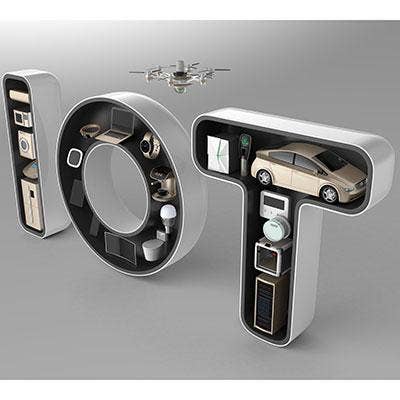IoT Channel Chronicles: goTransverse Tackles IoT Through Billing Infrastructure Opportunities

Tackling IoT Through Billing
According to a 2016 Verizon market report, the IoT market is expected to grow from $591.7 billion in 2014 to $1.3 trillion in 2019, said Michael Beamer, president of goTransverse – and goTransverse wants to help companies monetize these IoT-related services and products.
Solution provider goTransverse recently unveiled a new service that enables customers to quicken the process of integrating IoT cloud-based subscription and usage-based billing into their businesses.
Fast Tract, the services designed to help customers implement IoT services with their existing technology stack and shorten their time to market, helps customers go live with new product implementations in 90 days or less, said Beamer.
As part of the weekly IoT Channel Chronicles series, CRN sat down with Beamer to talk about what trends he is seeing with the Internet of Things.

Can you describe goTransverse's role in IoT? How big a part of your overall annual revenue is your IoT business?
One of the most central and fastest-growing segments of our business stems from IoT. While a lot of companies have successfully launched new products and services that serve this rapidly growing ecosystem, many are struggling to monetize those products and services too. That's where goTransverse comes in.
With the collective ecosystem around IoT utilization expanding, figuring out how to create new revenue models and bill for these services—and do so quickly—is more important now than ever. Using our flagship Tract platform, IoT companies can more easily capture and analyze all the data that IoT provides and then use that information to determine the best pricing and packaging options that drive adoption and grow revenue. Additionally Tract's analytics capabilities enhance operational efficiency, decision-making and turning data into actionable insights.

How will businesses be impacted by IoT and how does Tract help?
As the magnitude of data collected from IoT increases, businesses will need an elastic billing infrastructure to handle increasing loads as well as an agile and innovative approach for addressing potentially unforeseen business and monetization paradigms. Tract is built to support these types of innovative rating, billing and invoicing needs. Tract dynamically increases or decreases compute nodes to meet fluctuations in business and market demands, while also providing best-in-class efficiencies that lower client costs.

What challenges are you trying to overcome in the IoT market?
With today's vast adoption of cloud solutions, businesses are rapidly developing technologies that meet specific business or industry needs. But many are failing to incorporate monetization in their product road map from the get-go, relying on old, legacy billing paradigms that don't sync with new IoT infrastructures.
By partnering with other cloud companies whose expertise is on the back end, such as billing, businesses can focus on bringing new products and services to market faster and before their competitors. As IoT continues to evolve and companies increasingly produce more 'connected things,' innovative businesses recognize the opportunity to take their products one step further by wrapping service offerings around them and even coupling that with the ability to support complex usage modeling to more closely align costs with revenue. The amount of granular data generated by IoT deployments creates a demand for dynamic billing solutions that are cloud-based and scalable. By using Tract, companies can turn their smart, connected products directly into profit.

What vendors do you work with in deploying IoT solutions?
We have an incredibly diverse partner ecosystem that allows our customers to leverage solutions from other vendors as well as a range of system integrators across the entire technology stack. IoT is going to touch just about every business process—from CRM to ERP to accounting—making the integration of the back and front offices more important than ever.
For example, today's leading IoT businesses use information to provide better customer service, identify patterns and trends and launch new products. This is why we decided to partner with Pentaho, a leading data integration and business analytics company, to provide our customers with complete visibility into the subscription and usage life cycle. This data integration gives our end customers powerful insights into their subscriber base, providing valuable information that can be used to develop pricing and billing models, improve customer experience and retention, and drive bottom-line profitability.

Are your customers aware of what IoT is? How do you initiate the discussion of IoT opportunities with them?
Yes, our customers are very aware of what IoT is; they usually come to us because they haven't figured out how to monetize it yet. As we explain to all our prospects and brand-new customers, the possibilities in IoT are limitless.
That said, companies who want to get into IoT must think differently about how they account and bill for all the micro-events and data touchpoints that occur in this rapidly proliferating market. The more creative companies are in how they package and price, the more opportunity they create to maximize revenue and enhance stickiness. Tract was specially designed to provide companies with the flexibility and elasticity to foster this exact type of monetization creativity.

What future goals do you have surrounding IoT?
We're laser-focused on the success of our customers and turning the promise of the $1.3 trillion IoT market into a reality. While recurring revenue models are commonplace today, we expect that the addition of usage-based, or consumption-based, billing will disrupt business models once again.
We are at the tipping point of another transformational shift in the business world thanks to IoT, and we're proud to lead the charge as the monetization platform of choice for a rapidly growing list of IoT customers.